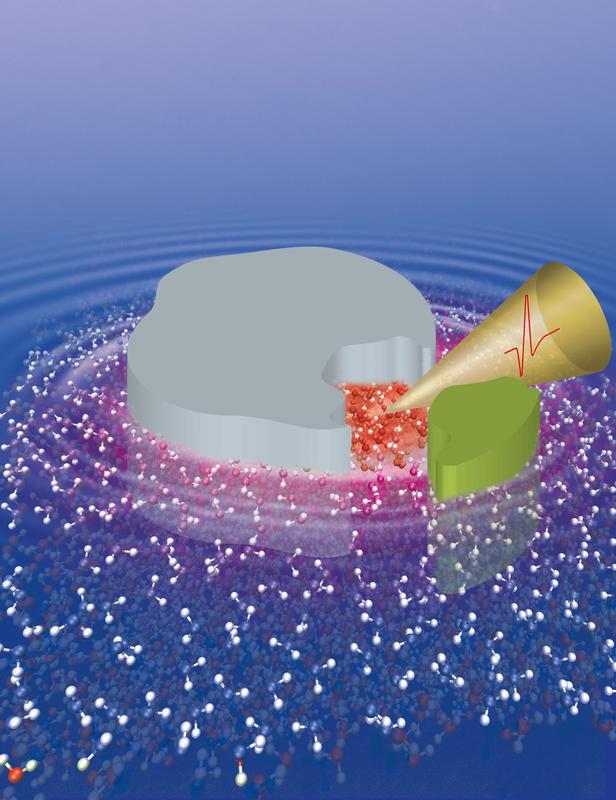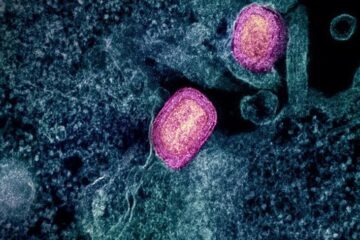"Funnel" attracts bonding partners to biomolecule

Schematic diagram of the hydration funnel in an enzyme-substrate complex (the protein is depicted in grey, its binding partner in green, and the funnel in yellow). © Havenith/Conti Nibali
Choreography of water movements
New experimental technologies, such as terahertz absorption spectroscopy, pave the way for studies of the dynamics of water molecules surrounding biomolecules. Using this method, the researchers proved some time ago that proteins influence water molecules in their surroundings: they determine the choreography of their movements. This effect occurs not only in the immediate vicinity of the protein, but can also be detected in the remote layers of the surrounding water molecules.
Collective interaction helps choose binding partner
But what purpose would such an interaction have? The researchers have come closer to finding an answer to this question by employing molecular dynamics simulations. It was demonstrated that the movement of water molecules in the vicinity of the protein’s active centre, the so-called binding pocket, is connected to potential binding partners in the water solvent.
“This movement causes the water molecules to form a hydration funnel of sorts, making up part of the molecular recognition mechanism in both partners,” explains Prof Dr Martina Havenith-Newen. Moreover, the movements of the water molecules have proved to be specific for certain binding partners.
Thus, if there are different potential binding candidates in the solvent, all competing to bind to the protein, these collective water movements are thought to assist binding.To conclude, such correlated water movements could support the interaction of biomolecules like enzymes and proteins with their binding partners and play a significant role in their mutual recognition, allowing the biomolecule to select or reject certain binding partners.
Cluster of Excellence RESOLV
The project was carried out under the auspices of the Cluster of Excellence RESOLV – Ruhr explores Solvation (ECX 1069), supported by the German Research Foundation.
Title catalogue
V. Conti Nibali, M. Havenith (2014): New Insights into the Role of Water in Biological Function: Studying Solvated Biomolecules Using Terahertz Absorption Spectroscopy in Conjunction with Molecular Dynamics Simulations, JACS, 10.1021/ja504441h
Media Contact
All latest news from the category: Life Sciences and Chemistry
Articles and reports from the Life Sciences and chemistry area deal with applied and basic research into modern biology, chemistry and human medicine.
Valuable information can be found on a range of life sciences fields including bacteriology, biochemistry, bionics, bioinformatics, biophysics, biotechnology, genetics, geobotany, human biology, marine biology, microbiology, molecular biology, cellular biology, zoology, bioinorganic chemistry, microchemistry and environmental chemistry.
Newest articles

After 25 years, researchers uncover genetic cause of rare neurological disease
Some families call it a trial of faith. Others just call it a curse. The progressive neurological disease known as spinocerebellar ataxia 4 (SCA4) is a rare condition, but its…

Lower dose of mpox vaccine is safe
… and generates six-week antibody response equivalent to standard regimen. Study highlights need for defined markers of mpox immunity to inform public health use. A dose-sparing intradermal mpox vaccination regimen…

Efficient, sustainable and cost-effective hybrid energy storage system for modern power grids
EU project HyFlow: Over three years of research, the consortium of the EU project HyFlow has successfully developed a highly efficient, sustainable, and cost-effective hybrid energy storage system (HESS) that…





















